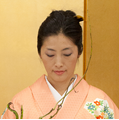Situated between Hanover and Leipzig, the border between East and West Germany traversed these mountains, so people couldn’t go near the area in the past. So it still has an undeveloped area depending on its locations, leaving the natural landscape mostly untouched, and now, for the Germans living in the surrounds of the three neighboring states (Lower Saxony, Saxony-Anhalt, and Thuringia), it is their favorite local sightseeing and health resort area.
There is a legend in the Harz Mountains that witches used to live there back in the middle ages, and they actually carried out witch hunts. Which explains the present-day mascot figure.

Bad Harzburg
As the name “Bad” suggests, this is a hot spring, or “bath”. Because of the hot spring there are numerous health spas and you see a lot of hot spring resorts for the elderly and patients undergoing rehabilitation after artificial hip or knee joint surgery, which is popular in Germany, the powerhouse of Western medicine.
When I took the cable car up to Burgberg, in the center, I found a lot of padlocks attached to a chain around a tower! This hilltop must be the romantic spot where local couples make their vows of love!



I took a walk along the raised walkway by the cable car, to see the forest from above, which felt wonderful. It is also fully equipped with fitness equipment and a children’s playground, making it perfect for a family trip.


Blue Lake
Known only to a few, Green Lake is quite enchanting. I enjoyed visiting this lake as people swam or sunbathed, going with the flow of time.

Dead Forest
What shocked me the most on this trip is that the Harz forest is facing death. Across the Harz National Park’s 250 square kilometers, Fichte (spruce trees) above 700 m are already afflicted by Borkenkäfer (bark beetle). Sadly, the damage is gradually spreading, and for the time being there is no solution. It really is quite distressing.

Co-existing with nature, there are many things like this that humans are powerless to do anything about.
Japan’s Shinto sees deities in the sun, the mountains, forests, rivers, lakes and so on, called Yaoyorozu-no-kami, and believes humans are made to live amid nature.
There is surely some meaning in disasters that occur once every 100 years, the experts will surely find the best solution, and I wish that in the near future they bring bright hope to the beautiful natural landscape of the Harz.






























































